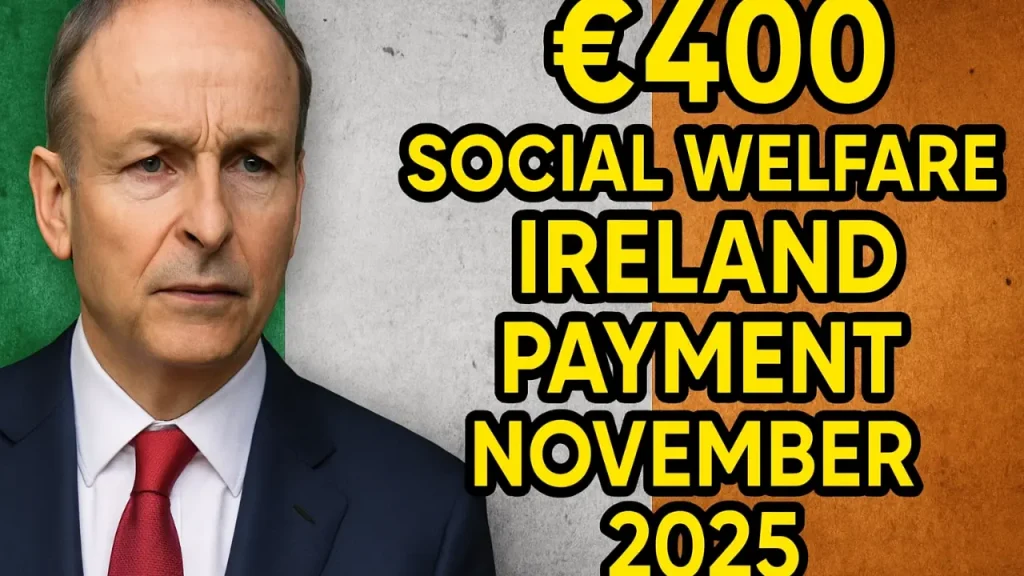In the backdrop of rising living and energy costs, the Irish Government, in its latest annual fiscal package—Budget 2026—has moved to enhance winter-fuel support for vulnerable households. Under the revised scheme, the weekly payment will rise to €38, translating over the full 28-week season into a total payment of €1,064 for eligible recipients. Crucially, eligibility has been broadened to include families receiving the Working Family Payment, thereby expanding the safety net to tens of thousands more households. These changes reflect a growing recognition that energy poverty is a serious risk for low-income families and older people alike, and come alongside other welfare reforms aimed at bolstering incomes and reducing consistent child poverty by 2030.
What’s changed: the headline figures
Here are the key changes announced under Budget 2026:
| Measure | Previous rate / threshold | New rate / threshold (from Jan 2026 unless otherwise stated) |
|---|---|---|
| Weekly Fuel Allowance payment | €33 | €38 |
| Total for 28-week season | €33 × 28 = €924 | €38 × 28 = €1,064 |
| Eligibility extension | Households over 66 and on qualifying payments | Includes households in receipt of the Working Family Payment |
| Income means test threshold (single) | €524 per week (from earlier changes) | No change in threshold announced, but eligibility widened |
| Income means test threshold (couple) | €1,048 per week | Ditto |
The upward adjustment of the weekly rate means each eligible household can expect an additional €140 (i.e., €5 × 28) through the fuel-support scheme.
Why the change was introduced
The shift arises from several key factors.
Growing concern over energy poverty
Energy costs remain a serious concern for many households, especially those on fixed or low incomes. By increasing the weekly allowance and widening eligibility, the Government aims to mitigate the risk that vulnerable people will face difficult choices between heating and other essential expenditures.
Wider welfare reform agenda
Budget 2026 is not just about one payment—but forms part of a broader effort to strengthen the welfare system. For example:
-
The Working Family Payment income thresholds are being increased by €60/week for all family sizes.
-
Child Support Payments are being raised to their highest ever levels.
-
A target has been set to reduce consistent child poverty to under 3% by 2030.
These broader supports mean the extension of fuel allowance eligibility fits within a strategic push to bolster family incomes and reduce poverty.
Back-dating and timing
While the weekly rate of €38 begins from 1 January 2026, the new eligibility—including for Working Family Payment households—will be backdated to January 2026, with payments being made from March 2026. This helps ensure that eligible households receive the full benefit of the increase for the winter/fuel season.
Who benefits and what to watch
Eligible recipients
Recipients of the Fuel Allowance include those aged 66 or over, on certain long-term social welfare payments, and now households receiving the Working Family Payment. The means test (weekly income and capital thresholds) still applies.
How the payment is made
Recipients can choose between:
-
A weekly payment of €38 for 28 weeks, or
-
Two lump-sum payments of €532 each (28 × €38 = €1,064, splitting this into two payments)
This flexibility allows households to pick the format that best fits their budgeting.
Things to watch
-
Even though eligibility is broadened, households must still satisfy the means test criteria (income per week, capital disregards).
-
Households must ensure their social welfare claims and details are up to date, as payments may be paid automatically to eligible claimants—but it’s always wise to check.
-
The scheme applies for the fuel season (traditionally September–April) though payments under the new rate begin 1 Jan 2026; back-dating ensures households receive the full 28-week amount.
The broader context: welfare in Budget 2026
While this fuel-support change draws headlines, it sits within a much deeper reform package. Some of the major welfare pointers include:
-
A €10 weekly increase for most social welfare personal rates from January 2026.
-
The largest increase in Child Support Payments in the State’s history: weekly rises of €8 for children under 12 and €16 for children aged 12 or over.
-
The Carer’s Allowance income disregard will increase markedly from July 2026 (€375 for singles, €750 for couples).
-
Introduction of an auto-enrolment retirement savings scheme (MyFutureFund) from January 2026.
-
Social welfare expenditure for 2026 is projected at €28.9 billion, including more than €1.15 billion of new measures to assist households.
All of this indicates a social-policy orientation in Budget 2026 towards supporting low-income and vulnerable households.
Financial impact for households
For a household newly eligible for the fuel scheme, the extra €140 may seem modest—but in the context of tight budgets it may make a meaningful difference. Consider a lone parent family who also benefits from improved thresholds in the Working Family Payment scheme and perhaps increased Child Support Payments: the fuel allowance increase is one piece of a larger income-support puzzle, helping manage seasonal fuel costs and thermal comfort.
Meanwhile, for older adults on fixed pensions, the increase in the Fuel Allowance, combined with the €10 weekly rise in pension rates, improves disposable income for the winter period.
In budget-planning terms:
-
A weekly increase of €5 × 28 = €140 per recipient.
-
For someone combining this with other rate increases (e.g., pension +10/week) the cumulative lift may be several hundred euros over a year.
-
Households that were previously excluded (e.g., working families now qualifying for the fuel payment) may feel an appreciable uplift, particularly when energy bills are volatile.
Fiscal and political considerations
From the Government’s perspective, the measure implicates several dimensions:
Fiscal cost
Extending eligibility and increasing the weekly rate means the scheme will cost more than under the prior year. However, the fuel scheme is means-tested and seasonally applied, which helps target the support. Public documents show that the Department of Social Protection’s budget for 2026 includes more than €1.15 billion of new measures to assist households, so this change forms part of that package.
Targeting and equity
By extending eligibility to households on the Working Family Payment, the Government is signalling that fuel-cost vulnerability is not only a pensioner or long-term claimant issue—but affects working families too. This may improve equity in support allocation. Equally, the retention of means-testing continues to target those most in need.
Political optics
Energy/heat costs remain politically sensitive, especially in a high-cost environment. The fuel allowance increase and eligibility expansion provide a visible, quantifiable benefit to households ahead of winter—an important timing point. It also dovetails with the Government’s stated target of reducing consistent child poverty to under 3% by 2030: ensuring families can heat their homes is a foundational part of that goal.
Complementarity with other measures
In the context of rising minimum wages, tax credits, and child-and-family supports, the fuel allowance change forms part of a broader coherence strategy: rather than one-off lumps, Budget 2026 appears to emphasise structural supports.
Challenges and limitations
No policy is without its limitations. A few caveats here:
-
Scope: While eligibility is expanded, households that are above the means thresholds or do not receive the Working Family Payment still may not qualify. Some families in need might fall outside the eligibility net.
-
Energy price volatility: The allowance increase is fixed at €38/week regardless of actual bill amounts or inflation in fuel prices. If energy costs spike, the fixed payment may not keep pace with real increases.
-
Awareness and take-up: Eligible households may not realise their eligibility has changed and might fail to claim, or might not switch payment formats (weekly vs lump sum) to suit their budgets. Effective communication will matter.
-
Seasonality: The scheme still operates over a defined “fuel season” (traditionally September–April). Households incurring high costs outside that season (e.g., due to poor insulation, older homes) may still face pressure.
What eligible households should do
If you may be eligible for the increased Fuel Allowance payment, consider the following steps:
-
Check current eligibility: confirm you are receiving a qualifying payment (e.g., Working Family Payment) or are aged 66+ and meet the means test.
-
Ensure your details with the Department of Social Protection are up to date: address, bank account, any changes in living arrangements.
-
Choose the payment format that suits you: weekly payments of €38 for 28 weeks, or two lump-sums of €532 each.
-
Budget accordingly: if taking the lump-sum route, plan for how you will distribute that payment across the season.
-
Be aware of the broader supports being introduced in Budget 2026: higher thresholds for the Working Family Payment, increased Child Support Payments, and other welfare rate increases may apply to you.
-
Monitor the actual winter heating costs: use the extra income to strengthen insulation, improve home efficiency or plan ahead for spikes in fuel cost.
Outlook for future policy
Looking ahead, the fuel allowance adjustments in Budget 2026 may set the tone for future annual budgets. Some possible implications:
-
The model of means-tested, seasonal payments may persist as a key tool to address energy poverty.
-
Future budgets may further increase weekly rates if fuel/energy inflation remains high.
-
The link between fuel support and other social supports may deepen: e.g., families with children, households in energy-inefficient homes may become new target groups.
-
Structural changes (e.g., increased insulation grants, energy-efficiency schemes) may accompany payment schemes, given the increasing policy focus on climate/energy transitions.
-
The Government’s target of reducing consistent child poverty to under 3% by 2030 may lead to complementary supports around housing, heating, energy-efficiency—which may in turn reduce demand on direct income supports like the fuel allowance.
Conclusion
With the weekly allowance raised to €38 and the full-season total reaching €1,064, Budget 2026’s revision of the fuel support scheme represents a meaningful step in shielding vulnerable households from energy-cost pressures. The expansion of eligibility to households receiving the Working Family Payment demonstrates that the Government recognises the changing profile of risk in the cost-of-living context: it is no longer just pensioners or long-term welfare recipients who are at stake, but working families too.
While the measure is not a panacea, it forms a visible, immediately tangible benefit for those eligible—and when combined with the wider package of rate increases, threshold changes and child-family supports announced in the Budget, it contributes to a broader framework aimed at improving household resilience. For eligible households, the key is to check their status, ensure claims are up to date, and use the flexibility in payment choice to optimise their budgeting for the winter ahead.
As always, the effectiveness of such a scheme will depend on real-world implementation, uptake, and whether payment levels keep pace with actual energy-cost pressures. But as a signal of intent, Budget 2026’s move is significant: it places fuel support firmly in the social-welfare strategy, not just as a one-off incentive, but as part of the structural scaffolding for low-income households navigating a cost-intensive period.







Leave a Comment